Sparkling fermented beverages are a healthy and zero-waste alternative to commercial soda pop. Here is a guide to 8 different types of fermented soda.
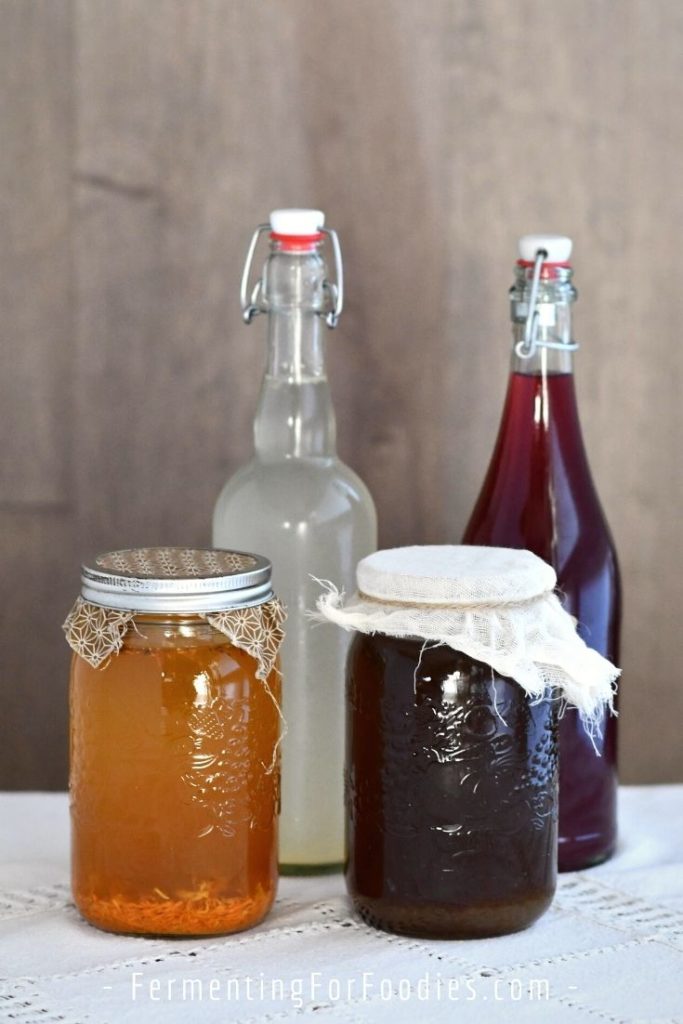
The Simplest Probiotic Culture
The simplest fermented soda pops are made with honey. When raw honey is diluted it naturally ferments. Using the naturally fermenting powers of honey is a really easy and reliable way to make fermented soda.
The key to making honey fermented drinks is to use honey that contains natural yeast and bacteria. Look for brands that are labeled unpasteurized or raw.

- Sweet beet kvass is perfect for brewing a single batch of homemade soda. Beets not only give this drink its bright pink color, but they also provide enough natural sugars to feed the ferment. Like the other fermented sodas, sweet kvass can be flavored with tea, juice, or herbs and spices.
- Sparkling fermented lemonade uses honey to ferment fresh lemon juice for a refreshingly probiotic drink.
SCOBYs and Grains
SCOBYs and grains are symbiotic cultures of bacteria and yeast. If you really enjoy drinking soda, then you may want to consider brewing pop with a symbiotic culture.
Here are some of the features of these symbiotic cultures:
- They are really vigorous and reliable.
- They need to be brewed on a regular basis.
- On their own, they don’t have much flavor, which means they’re perfect for added flavors.
- You will need to get the culture from a friend or buy one online.
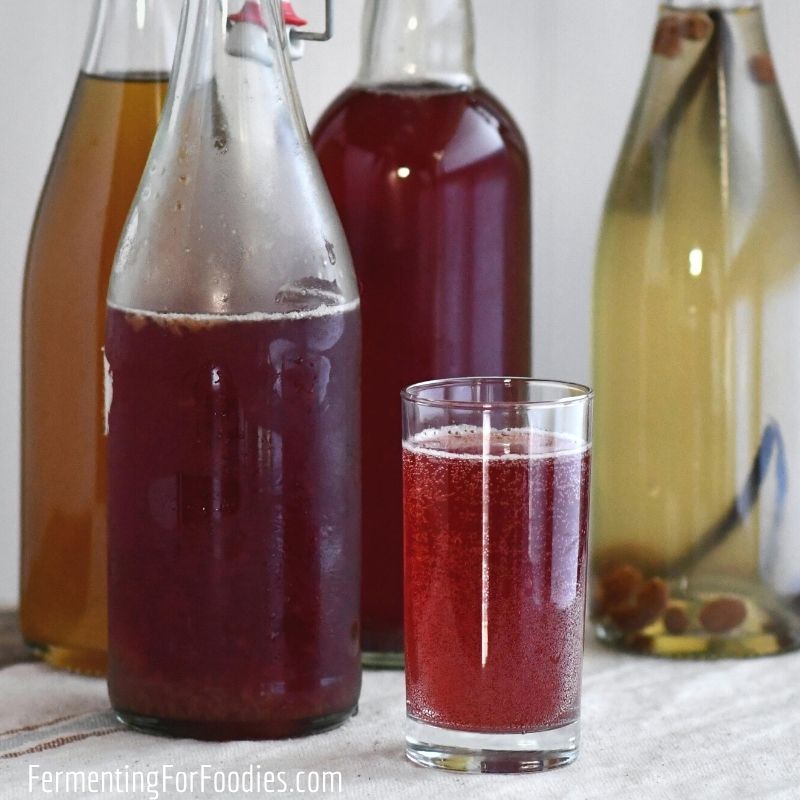
- Kombucha is the darling of the health-food soft-drink world. Unlike grocery store kombucha, the homemade drink is sweet and sour, and probiotic! Kombucha is brewed with black tea and sugar.
- Jun is similar to kombucha, except that it is brewed with green tea and honey.
- Water kefir grains eat sucrose and molasses. It is the sweetest of all the fermented beverages. So it is probably the best option for anyone wanting to switch from store-bought soda.
Wild Fermented Cultures
Wild fermented drinks are similar to sourdough starters. They are free-range cultures that are already in your home! On average, it takes about 5 days for a wild fermented soda to start bubbling.
Wild fermented drinks are my favorite because I can catch them whenever I want. However, it can be hard to catch wild cultures if you live in a heavily polluted city, have issues with mold in your home, or use a HEPA air filter.
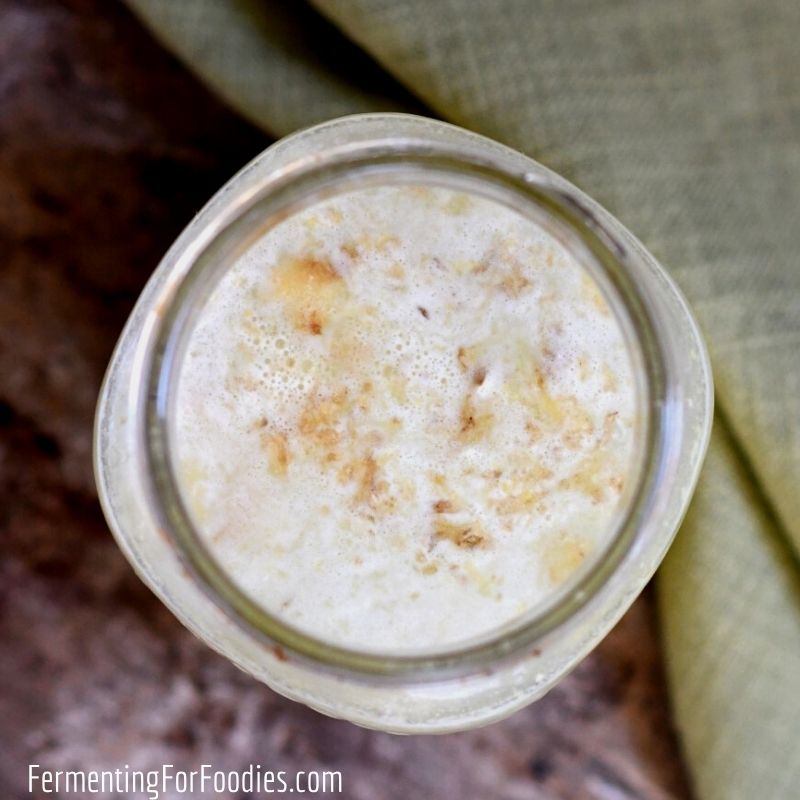
- Ginger beer is the most famous wild-fermented soda. It is made with the ginger bug, a culture of raw ginger and sugar. Ginger bug can also brew other flavors of soda.
- Turmeric soda is made from the same culture as ginger beer. And using a mix of ginger and turmeric root is a great way to make a less-spicy ginger beer.
- Fermented pineapple drink is made from sugar and the core and peel of a pineapple. It takes about 24-48 hours to start bubbling.
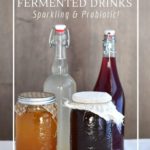
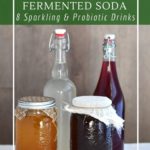
HOW CAN i BOTTLE SOME OF THESE WONDERFUL SODAS? aRE THERE WAYS TO STOP THEM FROM TURNING TO VINEGAR OR SOME SUCH?
Unfortunately, fermented beverages will continue to ferment until all the sugars are used up (when it definitely would taste like vinegar!) To slow down fermentation, you can store your fermented sodas in the fridge. This won’t completely stop the fermentation.
If you were really determined, you could add sulfites which would kill all the culture and completely stop fermentation. However, it also wouldn’t be probiotic… so not something I’ve tried.
I really like ginger bug and turmeric bug because they ferment more slowly than kombucha and water kefir. Maybe try switching up the type of soda? Enjoy!
after making the ginger bug do you mix an amount with juice or flavored tea then use swing top bottles and ferment for days before refrigerating? so much information is confusing
Hi Jackie, I have two posts on brewing with ginger bug. It sounds like you want to make all sorts of flavors, so I recommend checking out this post: https://www.fermentingforfoodies.com/ginger-bug-soda-flavours/ I’ve used that recipe hundreds of times, so it will definitely work! Let me know if you need more help. Cheers, Emillie
Hi..I made fermented carrots. They have a glass weight on them to keep them covered in the fridge, but I’ve found as I’ve eaten the carrots, the level of brine is below the carrot tops. should I add more brine to keep them covered?
Joanne
Hi Joanne, That always happens to me too. I usually don’t worry about it too much, because we tend to eat the whole jar within 2-4 days. However, they will go brown if left for very long out of the brine. So if you don’t think you’ll get through them quickly, topping up the brine is a great idea. Enjoy!